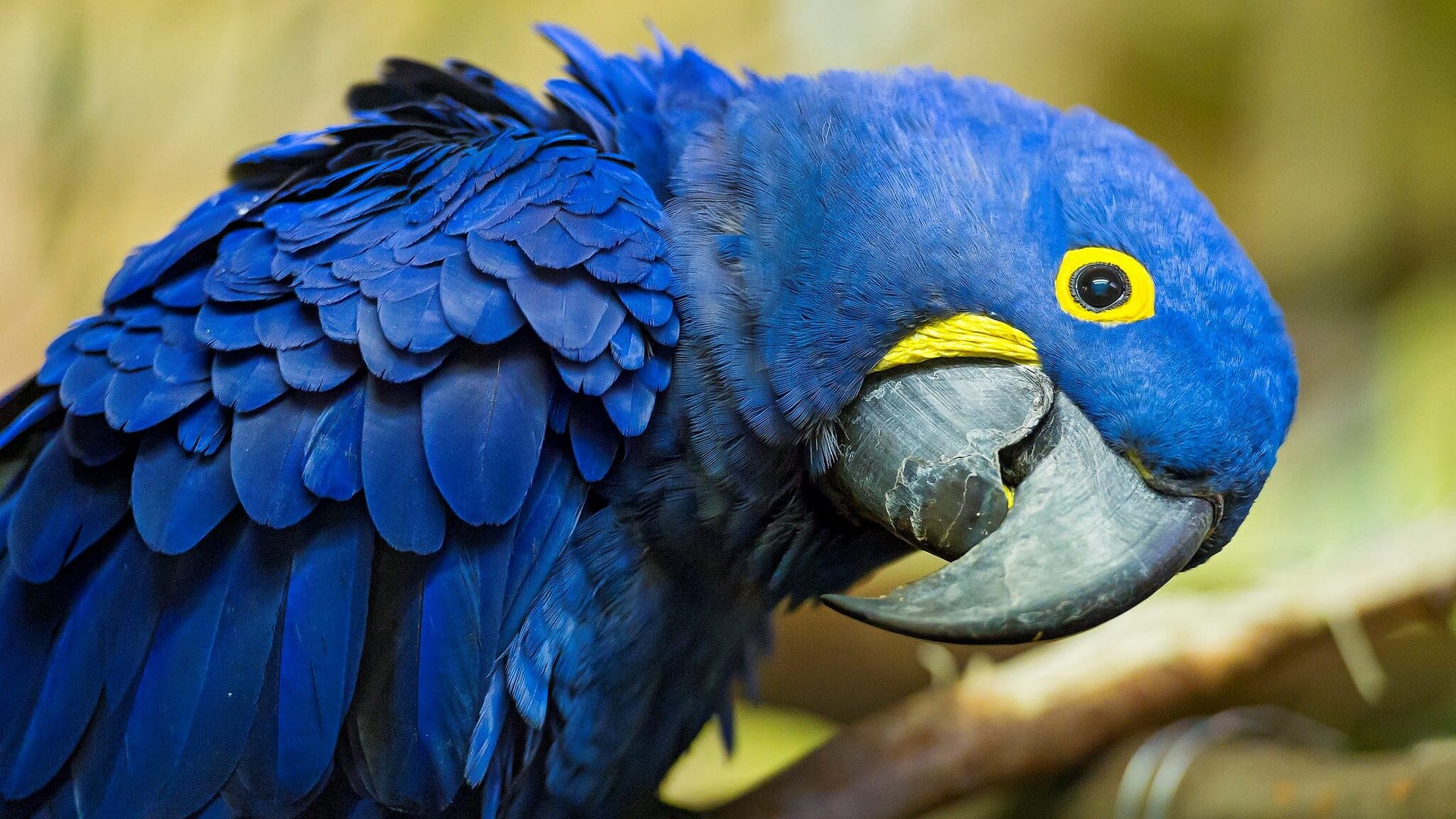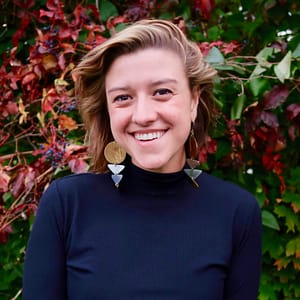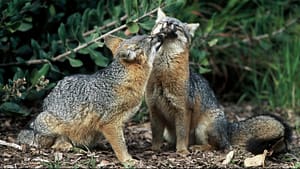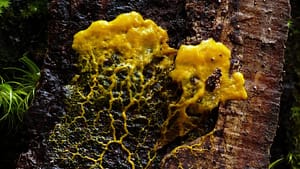In one of the world’s largest and most beautiful wetlands, thousands of airborne farmers are working their magic. Not so long ago, they were on the brink of extinction in the wild, but their ongoing comeback story is revealing a more complex relationship between parrots and plants than we could have ever imagined.
Who are these enormous flying agricultural wonders? Floating through the sky in striking blue and yellow, the hyacinth macaw lights up the sky. With a wingspan of up to four feet, they are the world’s largest flying parrot, and also one of its messiest eaters. As they fly by, raining down millions of seeds, they plant the crops the next generation will harvest!
This corner of the web of life will have you marveling at just how beautifully intertwined this planet can be.
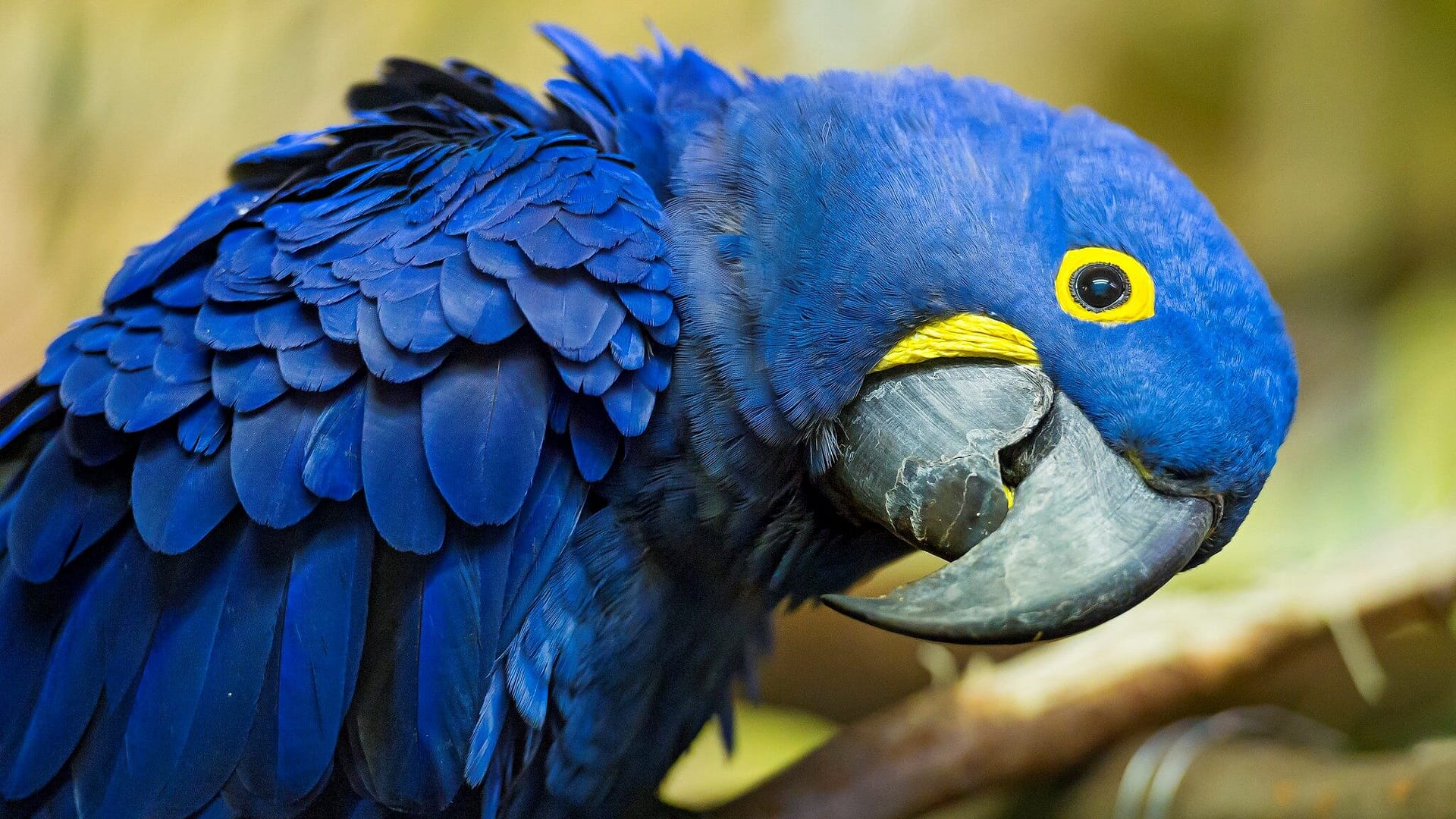
Let’s set the scene!
Most of us are unfamiliar with the world’s largest tropical wetland, the Pantanal. Covering an area slightly larger than England, this 42 million acre natural wonder spans Bolivia, Brazil, and Paraguay. It is one of the world’s most biologically rich ecosystems, and is home to more than 4,700 plant and animal species. 1
Even with its massive size and ecological diversity, encroaching forces like agriculture, poaching, and the illegal pet trade threaten its species. One near-casualty of this exploitation of the Pantanal was our friend, the hyacinth macaw.
In the 1980s, the hyacinth macaw became a major target for poachers who traded the birds on the illegal pet market. At one point, only 1,500 remained in the wild. But thanks to the hard work of local organizations like the Hyacinth Macaw Project, their numbers are now bouncing back!
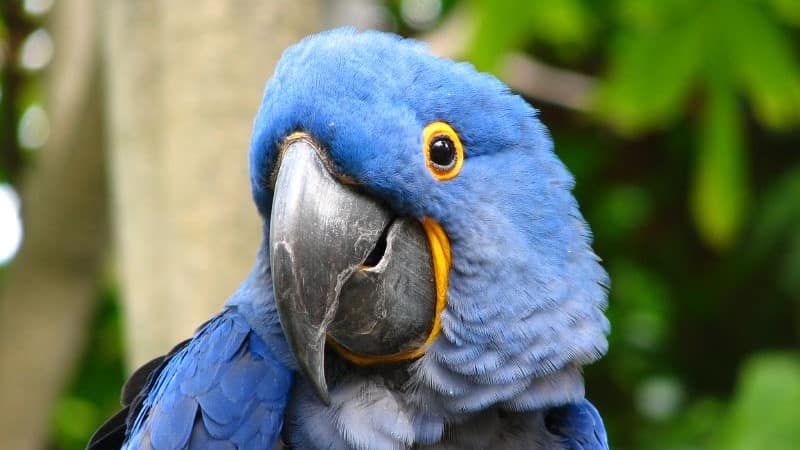
Source: Wikimedia
When an animal gets so near to the edge of extinction, it forces us to ask: what happens to an ecosystem when it loses an entire species?
Along with their stunning color, the hyacinth macaw has another distinguishing trait: they are messy eaters. Hyacinth macaws love to dine on the nuts of palms. Strangely, though, half the food they eat ends up on the forest floor! Now, for those of us who have lived with a toddler, those may be great food to floor odds, but in the natural world, “wasting” this much food is usually not good.
Interestingly, all of this dropped food has a purpose. This blunder quite literally sows the seeds for the next generation of trees! At one count, scientists found that 18 species of trees relied, in part, on hyacinth macaws as airborne dispersal systems for their seeds.
Without the hyacinth macaw, 18 other life-giving species of trees would lose their best chance at surviving, too!
To see these magnificent birds in action and get a taste for the importance of the hyacinth macaw’s continued comeback story, here’s a great video from the creators over at Terra Mater.
Terra Mater is quickly becoming one of our favorite places for science and nature content. So if you’re a nature nerd like us, make sure you jump over and support them by subscribing to their YouTube channel!
You can also learn more about the Hyacinth Macaw Project and help them keep protecting the hyacinth macaw as well as other endangered parrot species over on their website. Oh, and if you’re interested in learning more about how we can protect the macaw’s homeland of the Pantanal, please check out the work of The Nature Conservancy. On their website, you can learn about the projects they have ongoing in the region and support their work.
Our interconnected world!
With the power of Google, it’s easy to forget we only understand a fraction of our complex world. Sure, we can admire its beauty or know the basics of predator and prey, but there will always be corners we will never fully understand.
One species could hold the key to protecting another, seemingly unrelated, species. A tiny organism that gets overlooked time and time again could be the key to a landscape’s ecological diversity.
The world around us is unfathomably complex, and it’s up to us to recognize the ways in which the practices of generations before are no longer serving us now. We can bring back species from the brink. We can learn to balance local economic needs with biodiversity. People have created recipes for success before and we must be inspired to use their models where they’re needed most!
Here are just a few of my favorite examples:
Old Cellphones: The Key to Stopping Climate Change
Deforestation causes more emissions than all of the cars and trucks on our planet combined, so what can we do to stop it? Could the unlikely hero in this story be the old cell phone tucked away in your junk drawer? It is! Read on and you’ll see problem-solving at its best!
Read Article Watch Video Listen to PodcastWe may not all be able to pick up our lives and head off to become the frontline researchers, rehabilitators, and join conservation efforts in forests far, far away. Thankfully, though, we can become advocates for those people!
We can share their stories and support and care about their work. On our interconnected planet, those far away places and unknown species have an impact on us, even in the smallest ways.
Stay beautiful & keep laughing!
-Liesl

Don’t miss out on a single article!
Enjoy unlimited access to over 500 articles & podcast that give you a positive perspective on the state of the world and show you practical ways you can help.
Notes:
- “The Pantanal: Saving the World’s Largest Tropical Wetland | Projects | WWF.” World Wildlife Fund, 2015, www.worldwildlife.org/projects/the-pantanal-saving-the-world-s-largest-tropical-wetland. Accessed 29 Apr. 2021. ↩
- Mater, Terra. “The World’s Largest Flying Parrot | Hyacinth Macaw.” YouTube, 23 Oct. 2020, www.youtube.com/watch?v=OvU_Vj3UmCQ. Accessed 29 Apr. 2021. ↩


